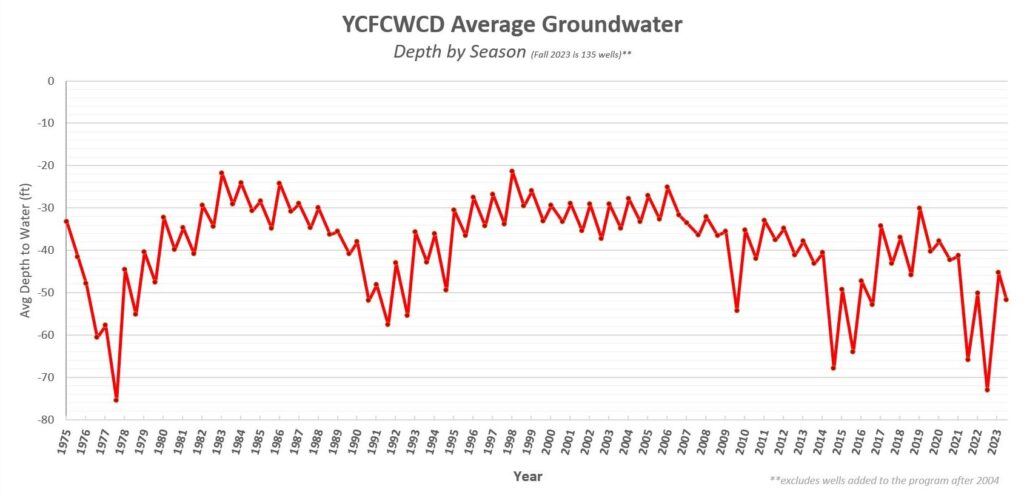Groundwater and surface water monitoring are foundational activities for effective water resource management. In order to identify and implement water management strategies, it is vital that decision makers have the data they need to ensure that their actions are effective or if programs need to be modified. The District’s long-standing groundwater monitoring program serves water managers well because in-depth records create a more complete understanding of the effects that droughts and applied surface water have on aquifer conditions.
One of the contributions that the District has made to regional water management is to promote collaboration among the various agencies, municipalities, and other stakeholders to work together for more comprehensive data collection including groundwater measurements. In 2002, the District was established as the lead agency for implementing Yolo County’s groundwater monitoring program and data management system in compliance with California AB 303, the Local Groundwater Management Act of 2000. The District created a database where well level measurements and water quality data are entered to create more comprehensive data sets to inform policy makers and water managers.

Through this and subsequent collaborative efforts, currently over 500 wells are measured throughout Yolo County by different agencies. The District currently has over 200 wells in its well-monitoring network. Thirty-two of these wells are monitored continuously, and 172 wells are measured twice per year, once in the spring and once in the fall. The objective of measuring in the spring and fall is to capture the highest level after the rainy season, and the lowest level in the fall after the summer growing season. The wells that are continuously monitored provide data instantly to help assess the health of the aquifer in real time.
Another important aspect of this monitoring network is that the District has continuous data for more than one hundred wells going back at least fifty years, with the oldest active wells in the monitoring program going back to the 1930s. Long-term data are incredibly valuable because they provide an excellent basis for measuring the effect of droughts and recharge efforts.
